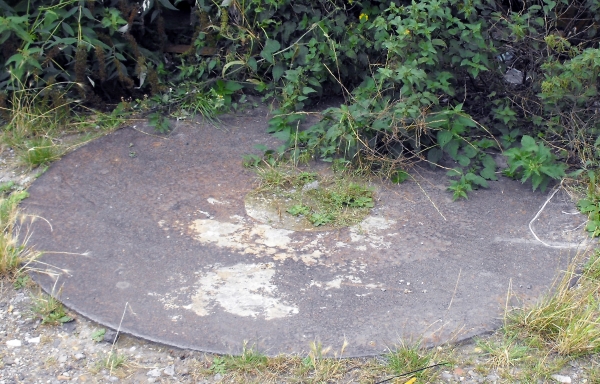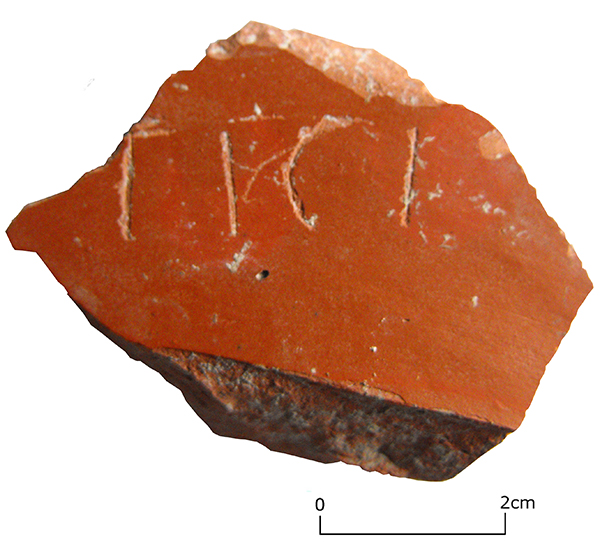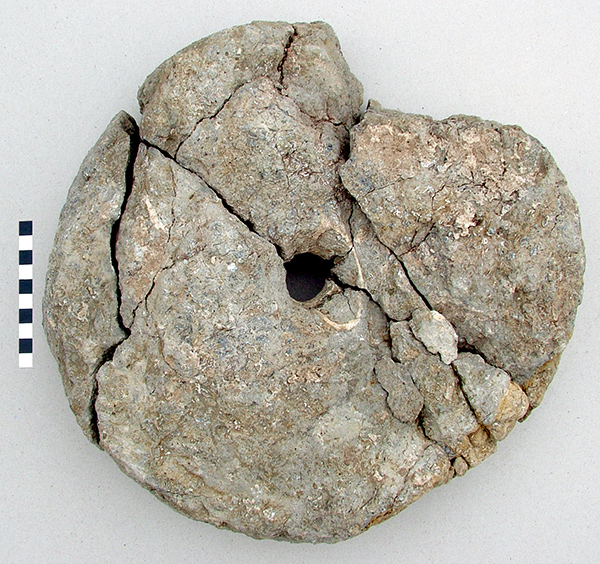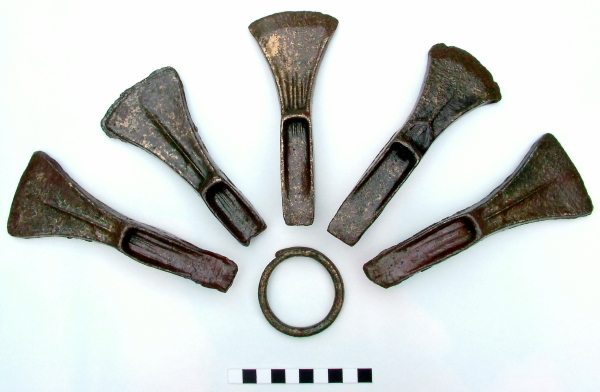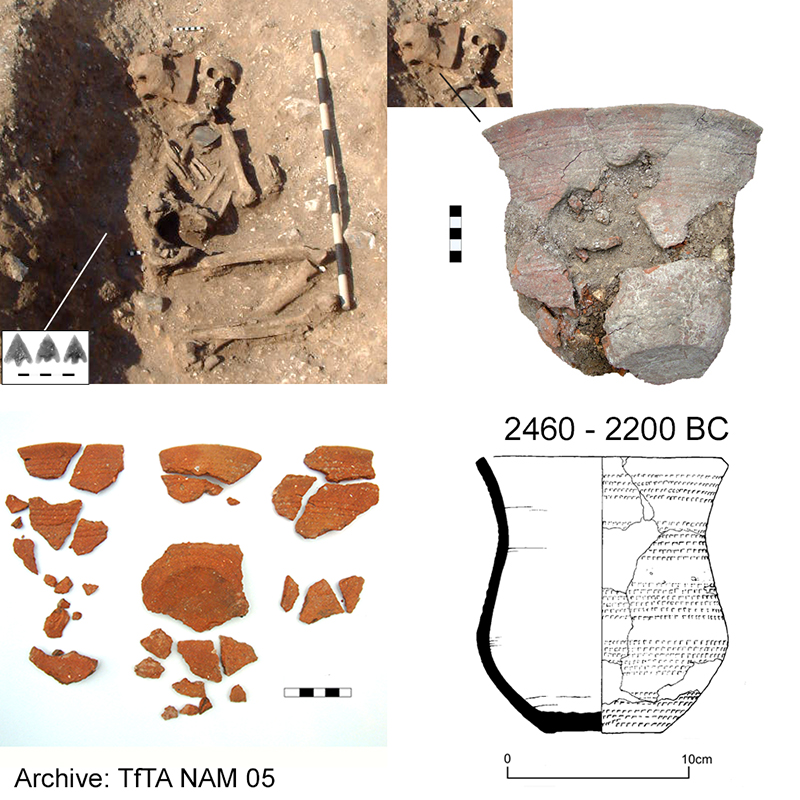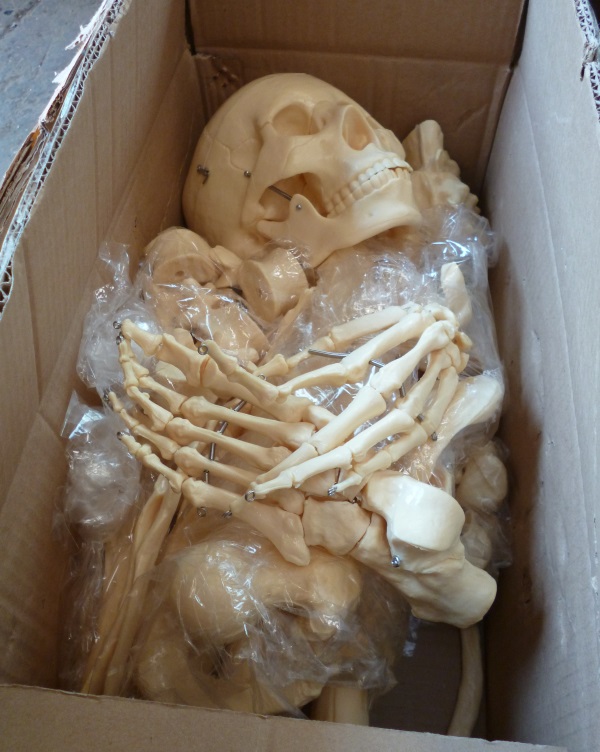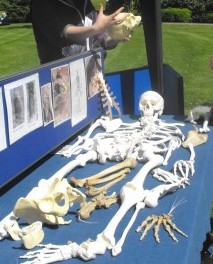
Today’s image for Day 117 of VM_365 is of an Anglo Saxon Sword and an X-Ray taken when it was being conserved.
The sword was excavated from grave 275 at the Anglo Saxon cemetery at Sarre in 1990. Measuring 0.9 metres long, the sword was found above the skeleton of an adult male aged between 25 to 30 years old and may have been laid on a coffin lid rather than next to the body.
The X-Ray revealed a faint herringbone shadow indicating pattern-welded construction with added cutting edges. The tang and shoulder of the blade show traces of a hilt and guard, probably of bone, while the downward side of the blade retained evidence of a wooden scabbard.
The end of the tang was associated with the fragmentary remains of an iron ring suggesting this was a ring-hilted sword, although without the decorative hilt furniture usually associated with swords of this type.
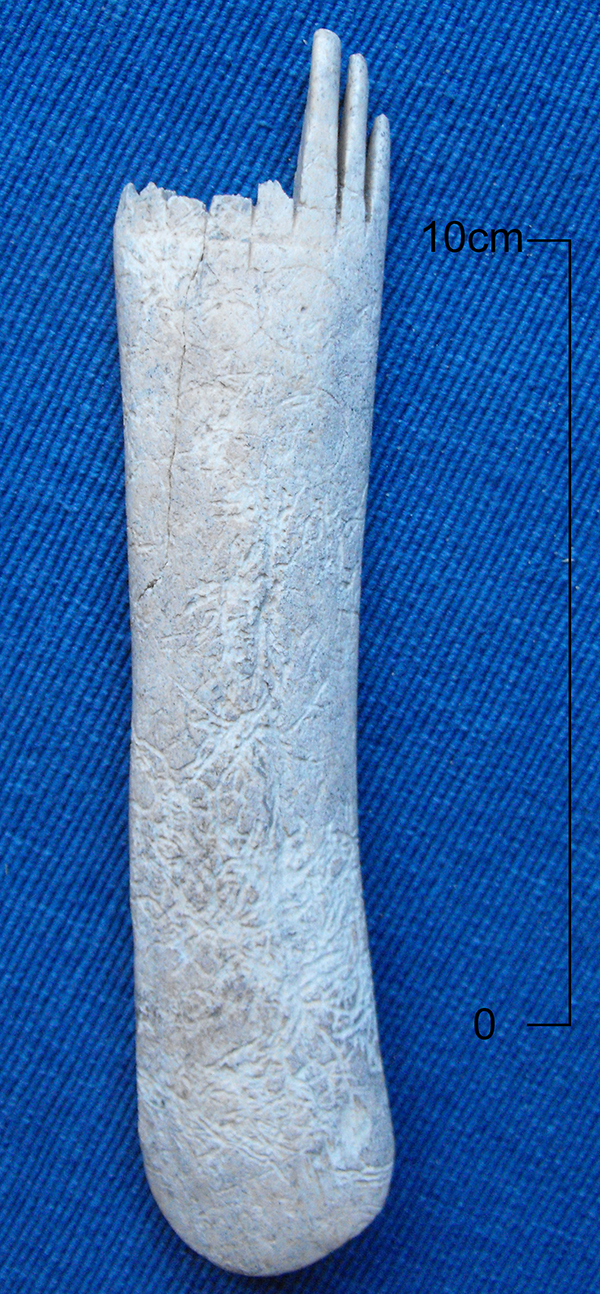
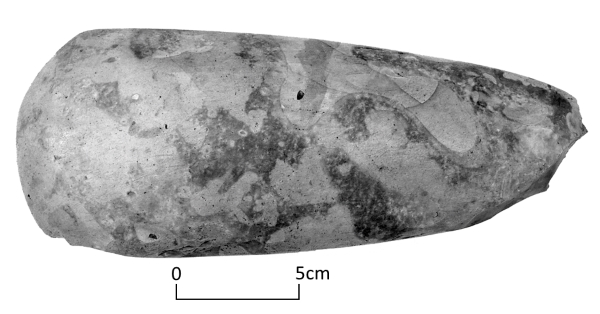 Today’s image shows a very large, polished, late Neolithic flint axe from Northdown, Margate. The axe was found in 1940 by a Mr Kelf while he was digging an Air Raid shelter behind his shop on Northdown Road.
Today’s image shows a very large, polished, late Neolithic flint axe from Northdown, Margate. The axe was found in 1940 by a Mr Kelf while he was digging an Air Raid shelter behind his shop on Northdown Road.